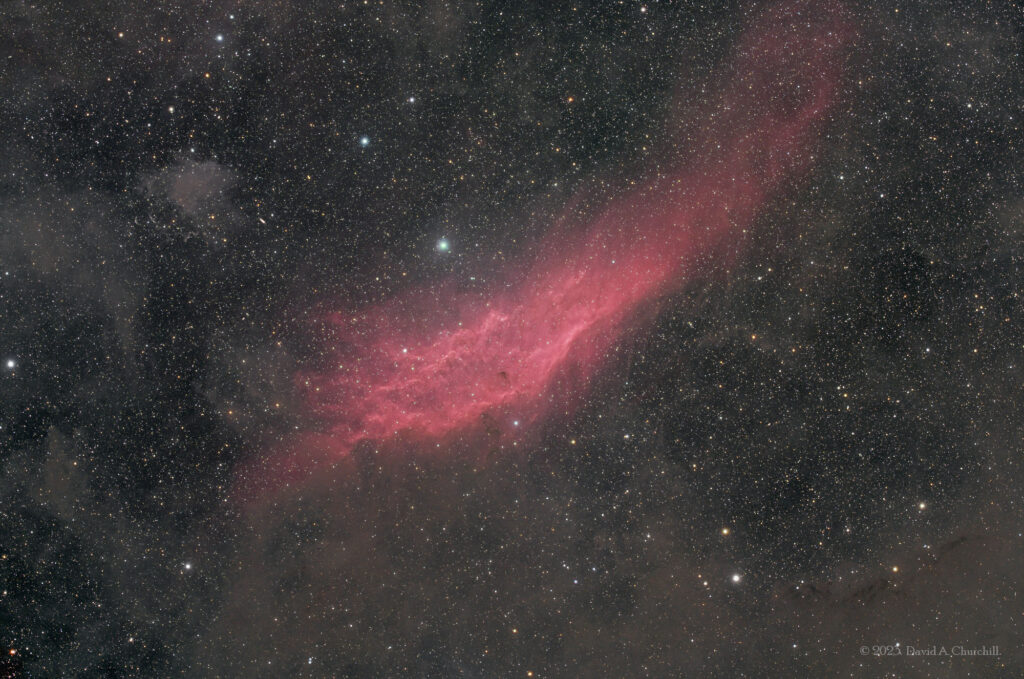NGC 1499
California Nebula. Emission Nebula, Perseus
November 2023. Cave Creek Canyon Observatory, Arizona Sky Village
- Description
- Technical
- Links
The California Nebula (NGC 1499) is an emission nebula located in the constellation Perseus. It is so named because it appears to resemble the outline of the US State of California on long exposure photographs. It is almost 2.5° long on the sky and, because of its very low surface brightness, it is extremely difficult to observe visually. It can be observed with a Hα filter (isolates the Hα line at 656 nm) or Hβ filter (isolates the Hβ line at 486 nm) in a rich-field telescope under dark skies. It lies at a distance of about 1,000 light years from Earth. Its fluorescence is due to excitation of the Hβ line in the nebula by the nearby prodigiously energetic O7 star, Xi Persei (also known as Menkib, seen at center below it in the inset at right). The California Nebula was discovered by E. E. Barnard in 1884. By coincidence, the California Nebula transits in the zenith in central California as the latitude matches the declination of the object.
Telescope: Askar FRA300pro f5
Mount: Astro Physics Mach-1
Camera: ZWO ASI6200MC pro
Guider: ZWO Off-Axis-Guider / ZWO120MM Mini
Filters: Optolong UV/IR Cut Filter (Luminance)
Lum: 89×5 mins = 445 mins
Total Imaging Time: 7h 25m
Data Imaged remotely on 5 nights during November 2023.
Data acquisition & Processing by David Churchill.
None


